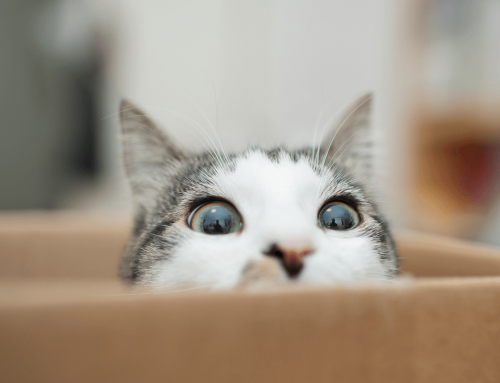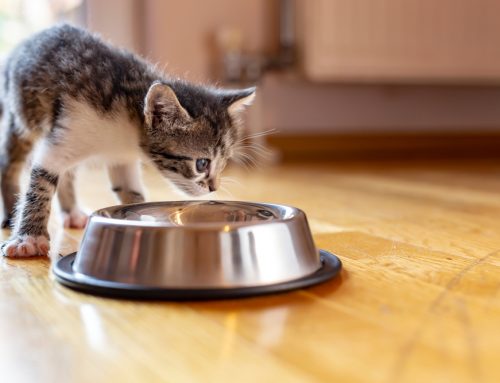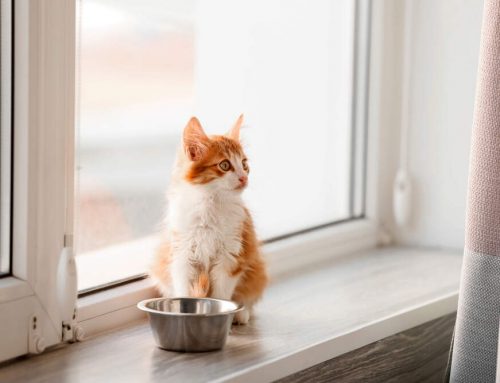Hairballs are familiar yet unpleasant sights for most cat owners. Ugly clumps of fur mixed with your cat’s digestive fluids, hairballs are not just a nuisance to clean up, but also might mean a serious health issue for your cat.
Most cats will suffer from hairballs at some point in their lives, but it’s important to know what’s normal and what’s not.
What Causes Hairballs?
Hairballs are an unfortunate side effect of your cat’s good grooming habits. His most essential grooming tool is his tongue, which contains hundreds of tiny hooks called papillae2 that collect dirt and dead fur. Loose fur gets caught on the papillae, and is ultimately swallowed. Most of the fur will pass through his digestive system and be excreted in the stool, but if he swallows too much for his body to eliminate naturally, some of it remains in his stomach until it is vomited.1
Long-haired breeds and older cats, who spend more time grooming than kittens, are most likely to develop hairballs. Hairballs also occur more frequently during a change of season1, when your cat is naturally shedding fur.
Are Hairballs Harmful?
The College of Veterinary Medicine at Cornell University reports that regurgitating a hairball every few weeks is not unusual, but repeated episodes can indicate an underlying health issue3 so make sure to check with your vet. The feline GI tract is designed to deal with swallowed hair, but when fur doesn’t move through normally it can be a symptom of digestive disease. Frequent hairballs can also signal un-diagnosed pain, itchy skin and emotional stress, as cats compulsively lick their fur to soothe discomfort.4
In extreme cases, a hair mass can become tightly lodged in the intestine, creating a dangerous blockage within the GI tract. This obstruction can be life-threatening and require surgery to remove. If your cat has no energy or appetite for more than 24 hours, or is retching repeatedly, consult a veterinarian as soon as possible.1
Can Hairballs Be Controlled?
A few simple steps can reduce the number of hairballs your cat experiences:
- Brush him regularly: Spend a few minutes each day brushing or combing your cat to remove excess fur before he can ingest it. Keep your cat’s coat tangle free so his fur doesn’t become matted. Cats with long hair can benefit from a visit to the groomer for an annual haircut.3
- Alter his diet: A diet rich in essential fatty acids, such as omega-3 and omega-6, will help keep your cat’s skin and coat healthy and may help eliminate excess shedding.5
- Try a hairball remedy: Feed your cat a hairball remedy (available at most pet stores) once or twice a week.3 Look for a petroleum-free product made with slippery elm, marshmallow or papaya.6
- While it may be difficult to eliminate hairballs entirely, keeping the problem under control will help your feline friend live a happier and healthier life.
SOURCES:
- College of Veterinary Medicine – Cornell University Feline Health Center, “The Danger of Hairballs,” June 13, 2015.
- Robinson PP, Winkles PA, The Anatomical Record, Department of Physiology, Birmingham University Medical School, “Quantitative Study of Fungiform Papillae and Taste Buds on the Cat’s Tongue,” January 1990.
- Tom Ewing, CatWatch Newsletter, College of Veterinary Medicine – Cornell University Feline Health Center, “Feline Hairballs-A Hairy Dilemma,” March 2004
- Becky Lundgren, DVM, VP Client Information Sheets, Veterinary Information Network, “Hairballs,” April 7, 2014.
- Brown, Andi, “The Art of EFAs ,” The Whole Pet Diet: Eight Weeks to Great Health for Dogs and Cats, Berkeley: Celestial Arts, 2006, 73-74.
- Dr. Karen Becker, Healthy Pets with Dr. Karen Becker, “Does Your Cat Have Hairball Issues?” January 16, 2013.





